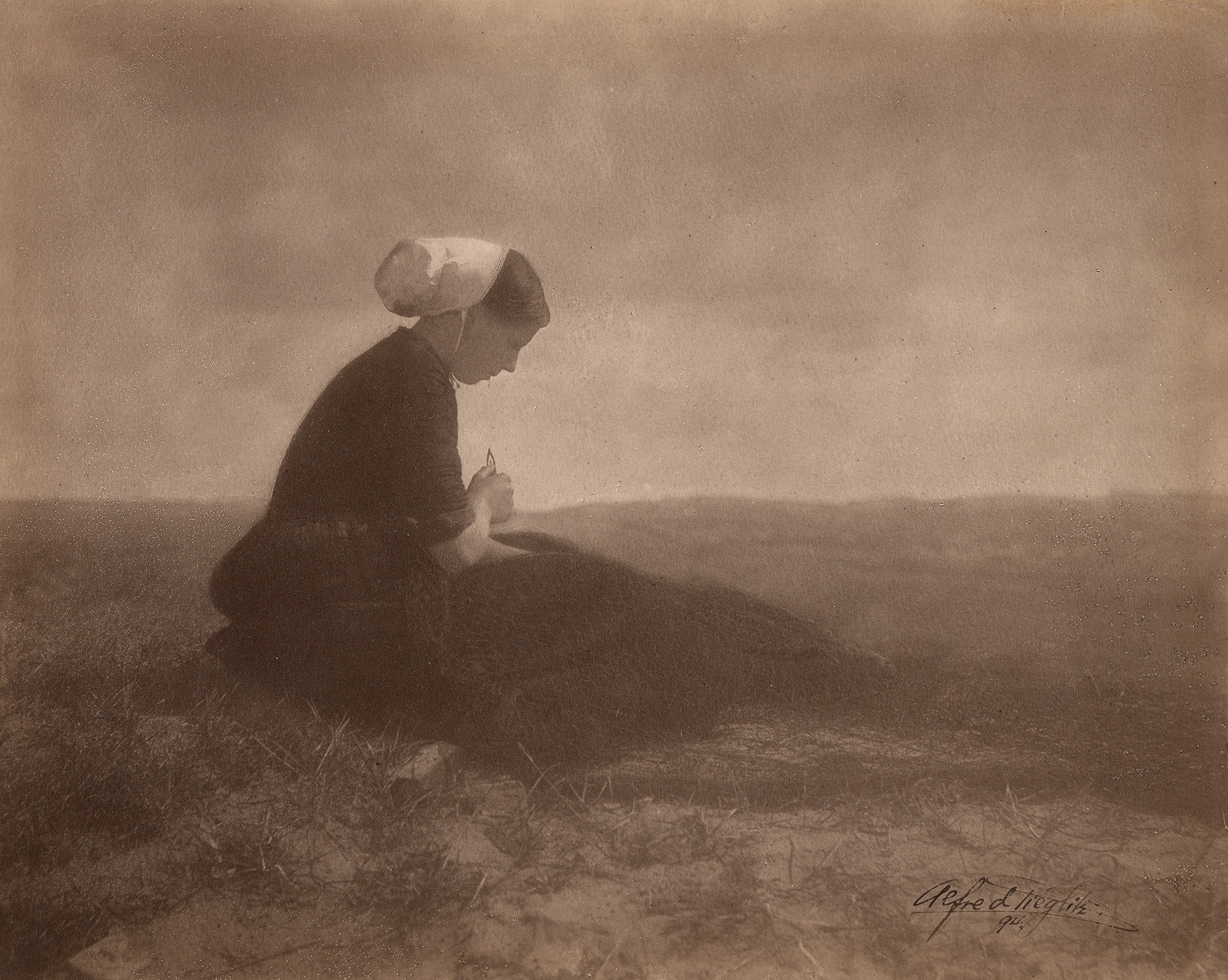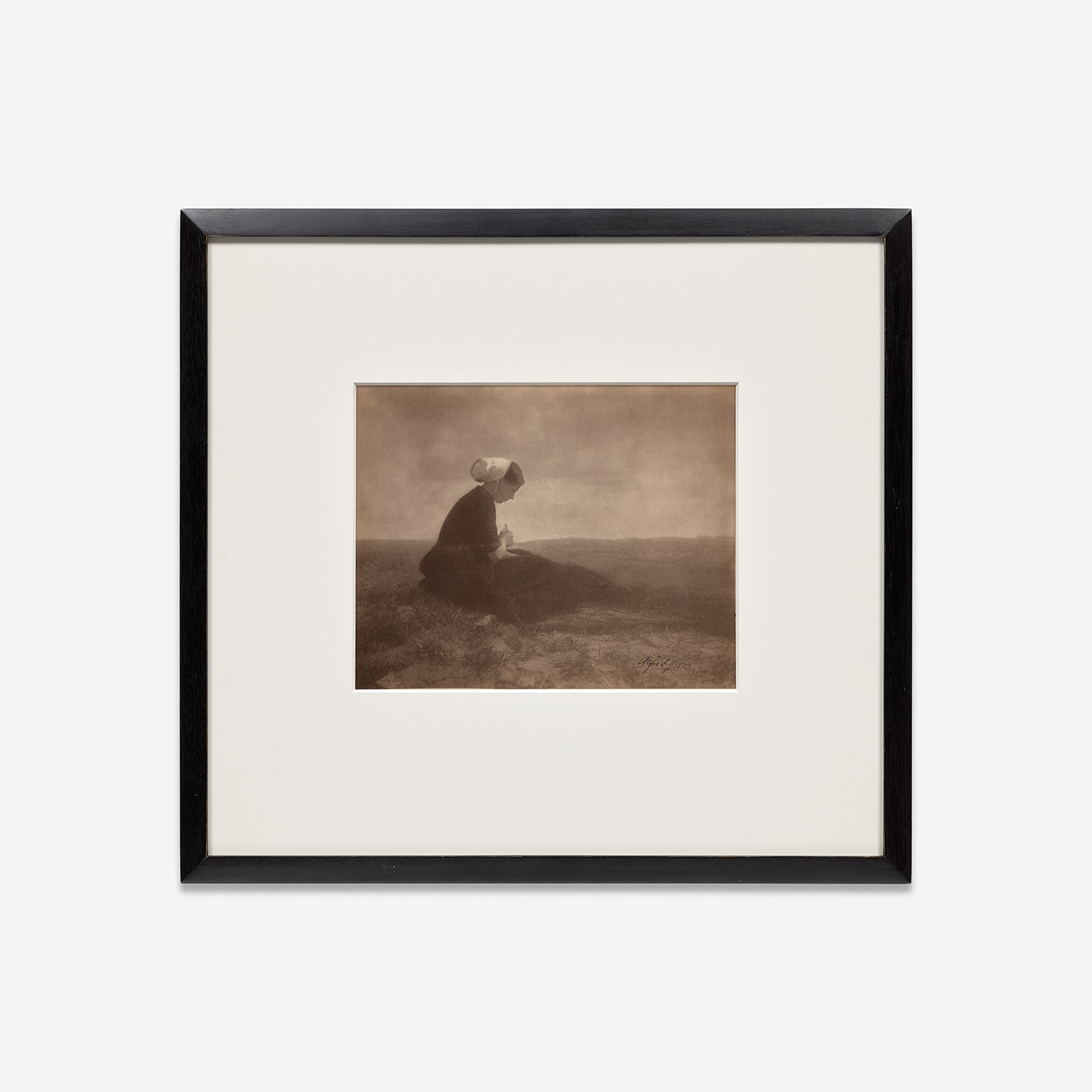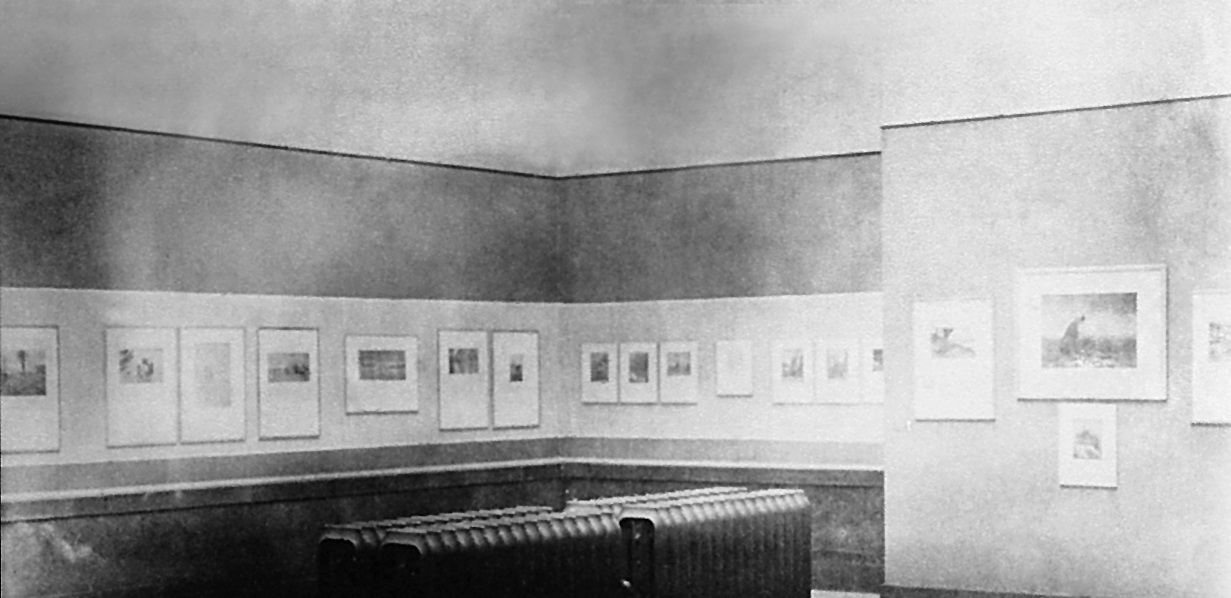

398
Alfred Stieglitz
The Net Mender
- Estimate
- $80,000 - 120,000
Further Details
Alfred Stieglitz’s The Net Mender is a signature image from the photographer’s early career, one that he famously called ‘my favorite picture’ in 1899. Stieglitz included the image in no fewer than 22 exhibitions between 1895 and 1910, and it was frequently reproduced in the photographic literature of the day.
In the spring of 1894, Stieglitz travelled to Europe with his new wife, Emmy. At this stage in his career, Stieglitz was an established photographer amidst a small field of serious practitioners striving to establish the medium’s status as a fine art. Fueled by this mission, Stieglitz produced a remarkable body of work on this trip through Italy, Germany, and The Netherlands. The Net Mender was made in the Dutch coastal town of Katwijk aan Zee, long a refuge for European artists who found inspiration in its landscape and people.
Stieglitz, too, was captivated by the fisherfolk of the area and the vast minimalist backdrop of the seashore. Photographing one day on shore, he was especially taken with the lone figure of a woman seated on the dunes, fully absorbed in the task of mending a fishing net. Working with his cumbersome 18 by 24 cm view camera, Stieglitz made this image which captures the woman poised in her work, her right hand holding a net-mending shuttle which is rendered with great clarity and, though small, is a focal point of the composition. The woman is seen distinctly against the evocatively vague expanse of dunes, plying her trade with singular focus. In addition to The Net Mender, Stieglitz produced a number of images during his stay in Katwijk aan Zee which are now classics within his oeuvre, including Gossip—Katwyck; Watching for the Return; and Scurrying Home. Of his work at Katwijk, Stieglitz authority Sarah Greenough notes that ‘by placing his subjects in the middle ground, [and] using a low vantage point . . . he emphasized their monumentality and community, and by implication, the nobility of their labor and the stoicism of their nature.’
In making this print, Stieglitz employed the carbon print process, a pigment-based process which produced prints of nuanced tonality and permanence. This labor-intensive technique involved exposing the negative on a sheet of tissue coated with gelatin infused with potassium bichromate and pigment. Once exposed, the sheet of tissue was pressed against a sheet of heavier gelatin-coated paper, thus transferring the image. Stieglitz, who was schooled in photographic chemistry and who remained a technical innovator throughout his career, favored carbon prints for exhibition purposes. It is likely that the print offered here was created for that purpose.
“All her hopes are concentrated in this occupation—it is her life.”—Alfred Stieglitz
In 1899 Stieglitz published an article in the journal Photographic Life entitled ‘My Favorite Picture’ which takes The Net Mender as its subject. He wrote, ‘[The Net Mender] was the subject of much study. It expresses the life of a young Dutch woman; every stitch in the mending of the fishing net, the very rudiment of her existence, brings forth a torrent of poetic thoughts in those who watch her sit there on the vast and seeming endless dunes, toiling with that seriousness and peacefulness which is so characteristic of these sturdy people. All her hopes are concentrated in this occupation—it is her life.’ As the possessor of a similarly intense focus, Stieglitz had a clear affinity with his subject.
The image remained important to its maker: Stieglitz included it, under several variant titles and in a number of different formats, in a run of photographic exhibitions in Europe and America from 1855 to 1910. Stieglitz showed it in the important International Exhibition of Pictorial Photography at the Albright Art Gallery in Buffalo as a large-format carbon print, such as the one offered here. This exhibition represented a landmark in the history of photography as a fine art and showed the work of Stieglitz along with his contemporaries Edward Steichen, Alvin Langdon Coburn, Gertrude Käsebier, and other photographers working at the very forefront of the medium. An installation photograph from the Buffalo exhibition shows The Net Mender hung prominently within the gallery of Stieglitz’s work.

Installation view of the International Exhibition of Pictorial Photography, 1910, showing The Net Mender on the far right, Albright Art Gallery, Buffalo, New York (photo courtesy Buffalo AKG Art Museum)
Because The Net Mender so perfectly summed up Stieglitz’s photographic ideals, and showcased his talents as a photographer and printmaker, it was illustrated numerous times during this phase of his career, most notably in the richly-produced journal Camera Notes in 1899, in numerous other art and general-interest periodicals, and in critic Charles H. Caffin’s Photography as a Fine Art (1901), one of the first assessments of photography’s place within the context of art history. The Net Mender was one of the few of his own photographs that Stieglitz hung in his home. Edward Steichen, in his memoir A Life in Photography, recounted that a large, handsomely framed print of The Net Mender occupied ‘a place of honor’ in Stieglitz’s New York apartment.
Sarah Greenough, in Alfred Stieglitz: The Key Set: The Alfred Stieglitz Collection of Photographs, locates two other carbon prints of The Net Mender in institutional collections: at the National Gallery of Art, Washington, D. C., and the Art Institute of Chicago. Platinum prints of the image, smaller than the carbon prints, are in the collections of Museum fur Kunst und Gewerbe, Hamburg, Germany; and The Princeton Art Museum. Aside from the carbon print example offered here, it is believed that only one other carbon print of the image has appeared at auction.